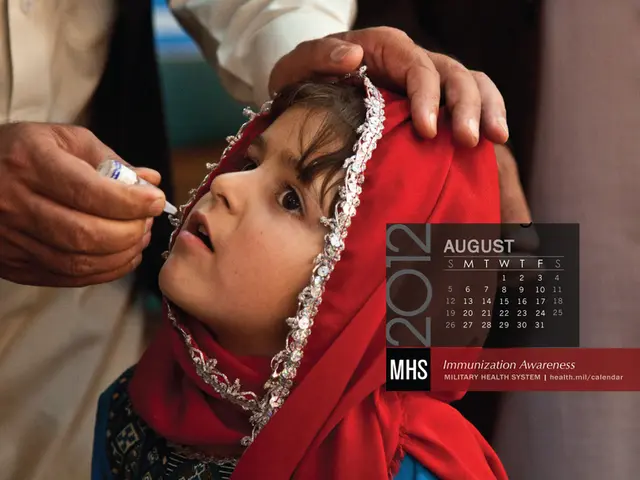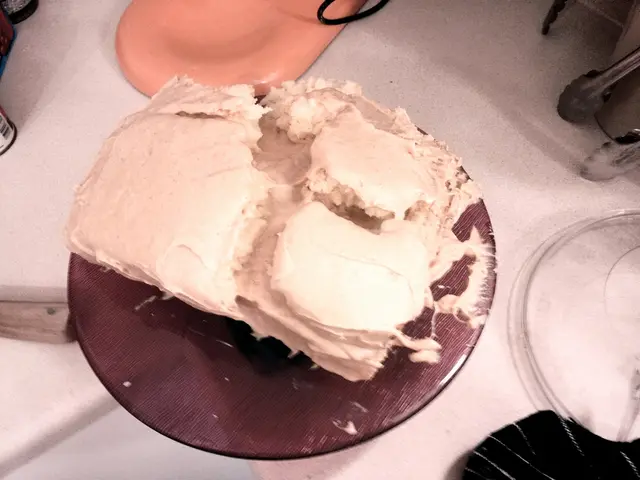Identifying Moles and Age Spots: Recognizing the Differences and Potential Signs of Skin Cancer
The aging process brings about a certain transformation, one of which are those unsightly dark spots on our skin – known as age spots. These marks can seem suspicious at first, causing concerns about skin cancer or precancerous growths. Yet, fear not, as understanding the difference between age spots and skin cancer can help put your mind at ease.
Exposure to the sun is a common factor for both age spots and skin cancer. They tend to appear on areas that receive ample sunlight, such as the hands, face, or shoulders. In this detailed guide, we'll walk you through the key differences between age spots and skin cancer, symptoms, diagnosis, and treatments for both conditions.
Deciphering Age Spots from Skin Cancer
Age spots and skin cancer share some similarities, but they have distinctive characteristics.
Age Spots
Age Spots, also known as solar lentigines or liver spots, manifest as small, darker patches on the skin. They are generally flat, smooth, and do not itch or feel crusty. Age spots result from the overproduction of the skin pigment melanin in an effort to protect the skin from excessive UV radiation. Appearing more commonly on light skin, they start showing up from middle age onwards.
Skin Cancer
Unlike age spots, skin cancer is a significant health concern. Skin cancer occurs due to damage caused by UV radiation or other environmental and genetic factors, which leads to the accelerated growth of skin cells. It is most frequent on sun-exposed areas, but it can develop anywhere. There are three main types of skin cancer:
- Basal Cell Carcinoma
- Squamous Cell Carcinoma
- Melanoma
Another potential culprit that can be mistaken for an age spot is actinic keratosis, a precancerous growth resulting from UV radiation damage.
Pictures
Can Age Spots Turn into Cancer?
Rest assured, age spots have no transformative capacity and do not evolve into cancer. However, actinic keratosis, which shares similarities with age spots, is a precancerous condition that, if left untreated, may morph into skin cancer.
Symptom Comparison
Both age spots and skin cancer have unique symptoms that can help differentiate between them.
Age Spot Symptoms
Age spots are:
- Flat and smooth
- Yellow, brown, or gray
- Clearly defined with distinct borders
- Sizes ranging from a few millimeters to centimeters
- Concentrated on sun-exposed areas like the face, hands, shoulders, feet, arms, and back
- May fade during winter months but become more prominent during summer
Skin Cancer Symptoms
Skin cancer symptoms can fluctuate, and the following points are common signs of skin cancerous growths:
- Asymmetry between the two halves of growth
- Irregular, blurred, or ragged edges
- Changes in size, color, or shape
- Multiple colors on the same spot
- Pink, blue, purple, black, or brown coloring
- Raised, red patches
- Pale or yellow firm patches similar to scars
- Pain, itching, oozing, or bleeding
- Crusty or scaly patches
- Raised edges that lower in the center
Signs of actinic keratosis include:
- Raised, rough, or scaly patches
- Red, gray, pink, or skin-colored patches
- Flat, scaly patches resembling age spots
- Scaly, rough bumps appearing like acne
- Scaly, rough patches on the lips
- Horn-like growths
When to Contact a Doctor
If you observe any unusual skin changes that deviate from your norm, it's essential to consult a doctor. Early identification of skin cancer enhances treatment possibilities and offers improved health outcomes. Seek medical advice if a mark on your skin:
- Changes in color, shape, size, or location
- Appears different from other marks on your skin
- Itches, crusts, scabs over, or bleeds and does not heal within 4 weeks
Diagnosis
Through physical examination, a doctor or dermatologist can evaluate age spots. They assess the appearance, texture, and placement of the spot to determine whether it may be something other than an age spot. If unsure, they may perform a skin biopsy for further testing. The results of a skin biopsy ascertain whether you have skin cancer or another skin condition.
Treatment
Age spots don't call for treatment as they are benign. Some individuals may opt for treatment to minimize their visibility. Potential treatments for age spots include creams, lotions, or procedures like laser treatments, cryosurgery, microdermabrasion, or chemical peeling. A dermatologist can suggest the most suitable treatments for your case.
Skin cancer treatments vary depending on several factors, including the type of skin cancer and a person's situation. If feasible, doctors often surgically excise basal cell and squamous cell cancers. Treatment options for skin cancer and actinic keratosis can include topical therapies, radiation therapy, chemotherapy, immunotherapy, or systemic medication.
Embrace the aging process with knowledge and understanding, knowing that age spots and skin cancer can be easily distinguished. If you notice any questionable changes in your skin, remain vigilant and consult a dermatologist for a thorough evaluation. Early detection and timely treatment are crucial components to maintaining a healthy, radiant complexion.
- In dermatology, age spots, also known as solar lentigines or liver spots, are distinct from skin cancer, as they are flat, smooth, and do not itch or feel crusty, while skin cancer can display raised, red patches, multiple colors, and other unusual symptoms.
- Skin cancer, marked by Basal Cell Carcinoma, Squamous Cell Carcinoma, and Melanoma, is a significant health concern that can develop on sun-exposed areas but may appear elsewhere, unlike age spots that tend to concentrate on the face, hands, shoulders, feet, arms, and back.
- While age spots have no transformative capacity, another potential skin condition that can be mistaken for an age spot is actinic keratosis, a precancerous growth resulting from UV radiation damage which, if left untreated, may morph into skin cancer.
- In the realm of medical-conditions and health-and-wellness, understanding the differences between age spots and skin cancer is crucial, as early identification enhances treatment possibilities and improves health outcomes.
- To maintain skin-care and address skin-conditions, a dermatologist can suggest suitable treatments for age spots and skin cancer, with options ranging from creams, lotions, and procedures like laser treatments for age spots, to surgical excision, topical therapies, radiation therapy, chemotherapy, immunotherapy, or systemic medication for various types of skin cancer.








